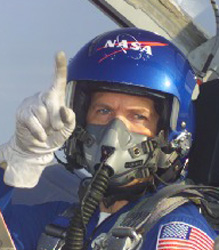 |
US Military Aviation
Flight Helmets
NASA/Experimental |
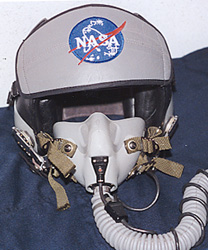 |
From 1915 to 1958 the National Advisory Committee for Aeronautics (NACA) provided advice and carried out much of the cutting-edge research in all areas of aeronautics in the United States. High-speed flight research after the WWII was ofter a collaboration between the NACA and the US ARmy Air Force. The NACA was succeeded on October 1 1958 by the National Aeronautics and Space Administation (NASA) which the major focus became the research into human spaceflight, but the advanced research in all the areas of aeronautics continue into the scientific laboratory as well as in flight test at NASA Dryden Flight Research Center in Edwards.
During this long life activity several types of flight equipments and helmets have been used and tested by NACA/NASA test pilots and flight crew. Mostly of the more common types of flight helmets have been utilized through the years by NACA/NASA pilots.
Early "transitional" rigid flight helmet
|
|
| Very interesting reproduction of an early flight helmet based on modified hard tank helmet and USAAF A-11, AN-H-15 WWII soft helmet with NACA logo and A-14 Oxygen mask |
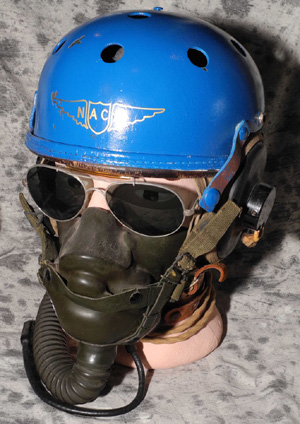
|
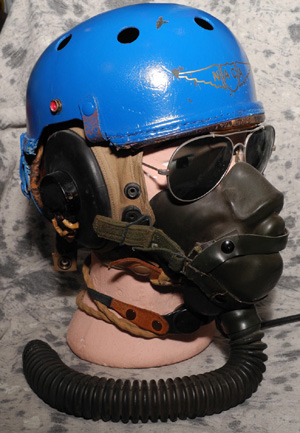
|
P-1A
|
|
| NACA test pilots during the early 50s with a P1-A flight helmet and A-13A oxygen mask. (NACA) |
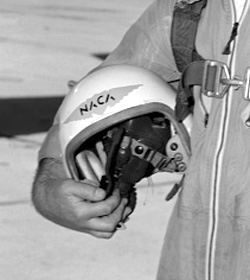
|
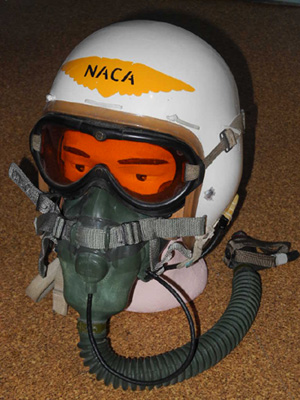
|
P-4B
|
|
| This NASA marked P-4B helmet belonged to General Albert Henry Schwichtenberg who was the head of the department of Aerospace Medicine and was in charge of the physical evaluation of the Project Mercury astronauts. |
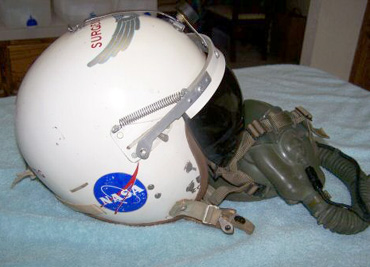
|
 |
|
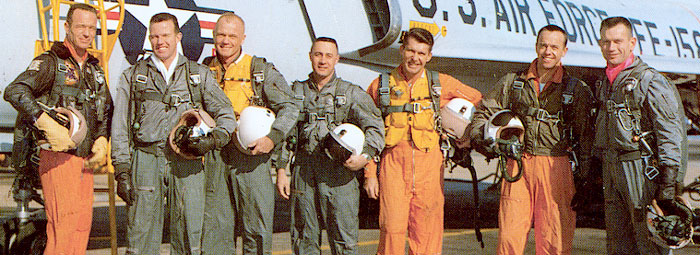
The NASA original seven Astronauts, besides an USAF F-106B Delta Dart, equipped with TOPTEX flight helmets. The TOPTEX was widelly used by military and civilian test pilots. (NASA) |
| NASA Astronaut Carpenter during flight training with TOPTEX flight helmet and MS22001 oxygen mask. (NASA) |
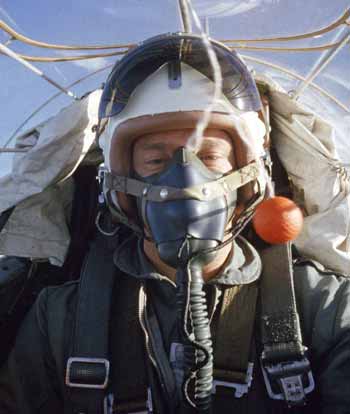
|
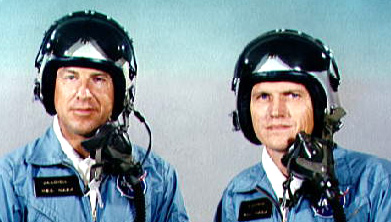
|
GEMINI VII Astronauts James Lovell and Frank Borman wearing TOPTEX flight helmet and MBU-5/P oxygen mask. (NASA) |
| NASA test pilot Joe Walker with TOPTEX flight helmet and MS22001 oxygen mask. (NASA) |
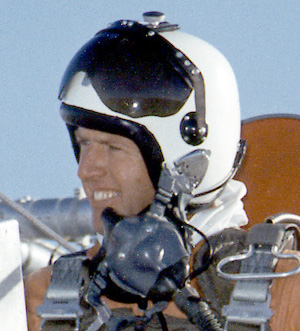
|
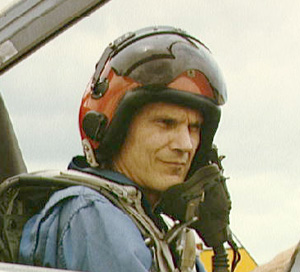
|
NASA Astronaut on T-38 wearing a TOP-TEX helmet with staright bayonet receivers and oxygen mask MBU-5/P (NASA) |
| NASA Astronaut Alfred Worden with TOPTEX flight helmet and MBU-5/P oxygen mask. (NASA) |
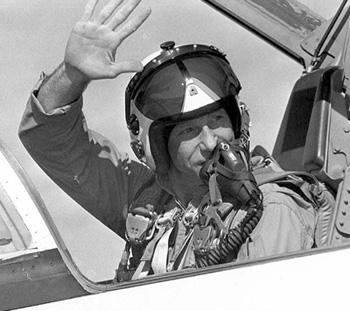
|
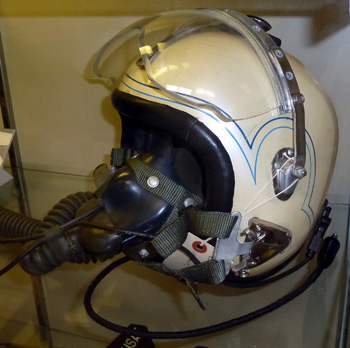
|
TOPTEX flight helmet of NASA test pilot Tony Levier |
| TOPTEX flight helmet and MBU-5/P oxygen mask belong to NASA Astronaut James Irwin. |
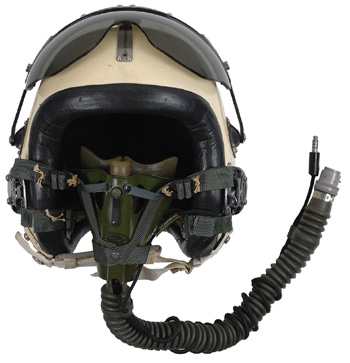
|
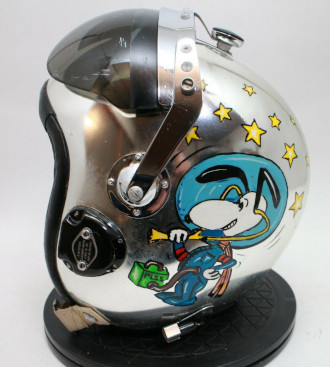
|
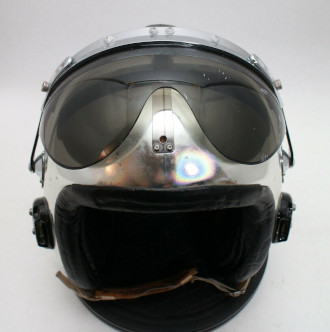
|
This Toptex helmet belonged to NASA Astronaut Donald L. Holmquest. He used the helmet during his 53-week course in flight training at Williams Air Force Base, Arizona in 1969, where he earned his Air Force wings.
The Snoopy on his helmet says ďMDĒ for his Medical Doctor degree and PLSS for Portable Life Support System because he was selected for Skylab missions but never flew. He worked at the Manned Spaceflight Center at Johnson Space Center in Houston (Dr. Roman Sperl)
.
|
HGU-2A/P
|
|
| HGU-2A/P double visor and oxygen mask MBU-5/P belong to NASA Astronaut Edwin "quot;Buzz" Aldrin. The Apollo 11 patch is laminated directly into the visor housing. This helmet was sold in a space memorabilia auction on 1998. (Superior Galleries) |
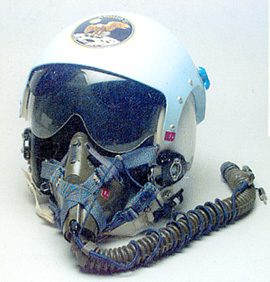
|
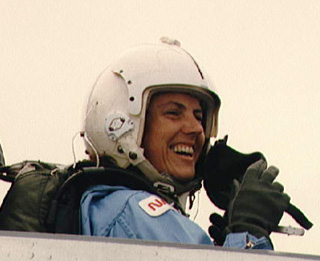
|
Payload Specialist and teacher Christa Mcauliffe with HGU-2A/P single visor. Mcauliffe tragically died during the Challenger incident in 1986. |
| HGU-2A/P double visor and oxygen mask MBU-5/P belong to NASA pilot Cambiaso |
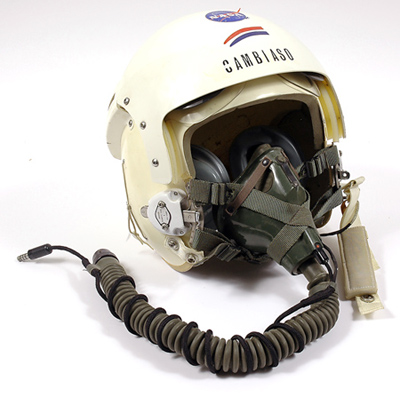
|
 |
NASA custom fit helmet (based on DH-151 or PRK-37/P shell)
|
|
| NASA customized flight helmet with dual visor, and MBU-5/P oxygen mask. In this model the visor cover has been trimmed for better visibility. (NASA) |
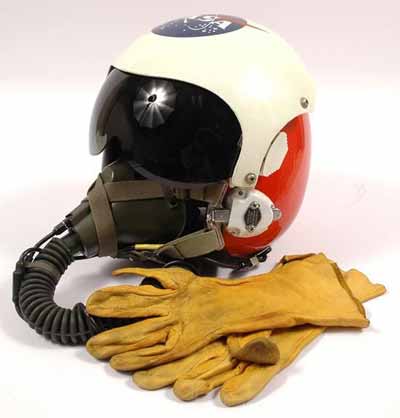
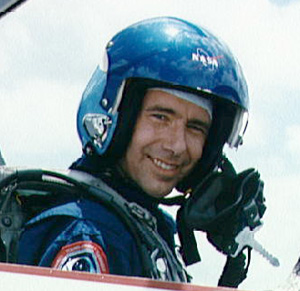
|
NASA customized flight helmet with dual visor, "christmass tree" bayonet receivers and MBU-5/P oxygen mask. (NASA) |
| NASA flight helmet with customized dual visor. The NASA "worm" logo was used during the Space Shuttle era untill 1992. Right after this period it was considered "obsolete" and only the original "meetball" was thus used. (NASA) |
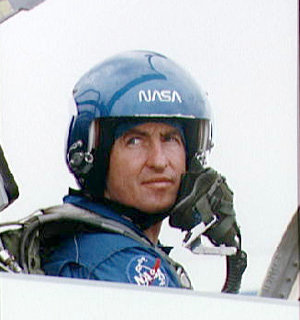
|
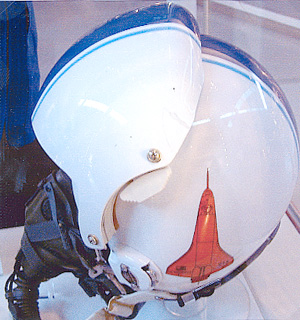
|
This customized dual visor flight helmet and oxygen mask MBU-5/P belong to NASA Astronaut Joseph Engle. Note the patch of the Shuttle "Enterprise". This helmet is displayed in the Smithsonian National Aviation Museum in Washington Dulles Airport. |
| ESA Mission Specialist Claude Nicollier with a gold colored customized dual visor flight helmet. (NASA) |
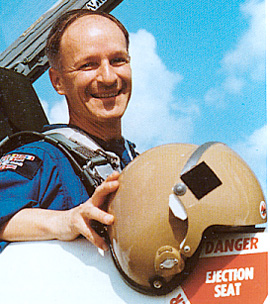
|
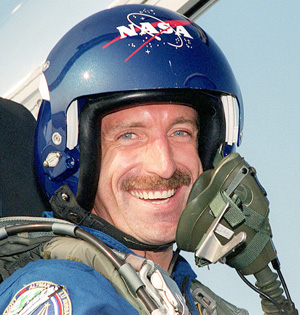
|
NASA customized dual visor flight helmet and oxygen mask MBU-5/P. The helmet is painted in metallic blue color. (NASA) |
| NASA customized dual visor flight helmet and oxygen mask MBU-12/P. The NASA patch is laminated directly into the visor housing. |
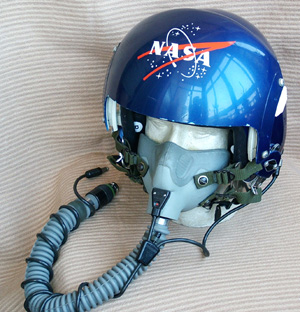
|
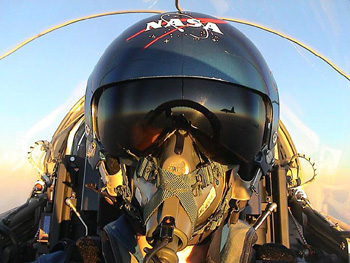
|
NASA custom fit flight helmet with MBU-5/P. (NASA) |
| NASA customized dual visor flight helmet in metallic red color and oxygen mask MBU-12/P.(NASA) |
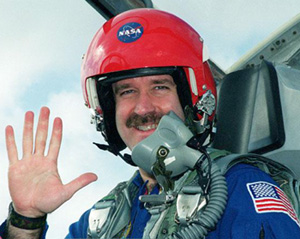
|
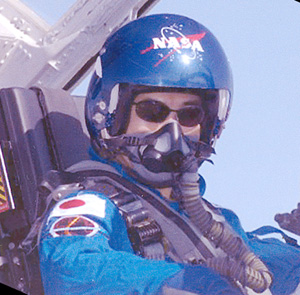
|
NASDA Mission Specialist Soichi Noguchi wearing an unusual assembly of customized dual visor flight helmet and the new low profile oxygen mask MBU-20/P. (NASA) |
| NASA Mission Specialist Tracy E. Caldwell with NASA customized flight helmet and oxygen mask MBU-20/P .(NASA) |
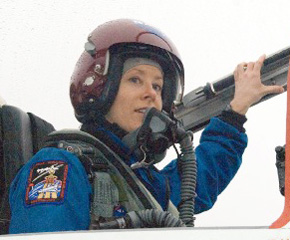
|
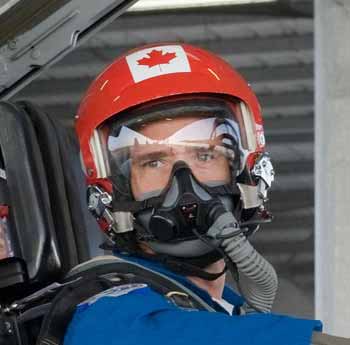
|
Canadian Space Agency Mission Specialist Chris Hadfield with a customized dual visor flight helmet and the new low profile oxygen mask MBU-20/P. (NASA) |
 |
|
4AM SUPER TOPTEX
|
|
NASA experimental flight helmet 4AM Super TopTex.
|
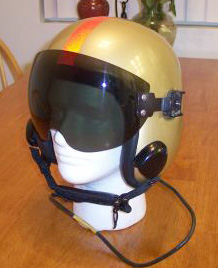
|
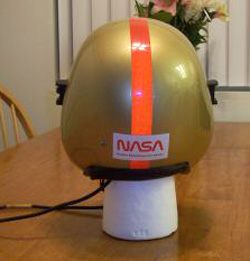
|
Manufactured by Protection Inc. the 4AM was used by some NASA test pilots. |
NASA test pilot at Dryden Flight Research Center in Edwards wearing a 4AM Super TopTex experimental flight helmet. (NASA)
|
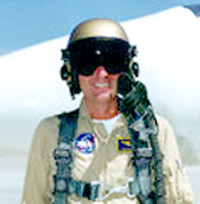
|
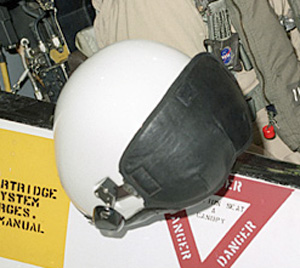
|
NASA test pilot on F/A-18 Hornet at Dryden Flight Research Center in Edwards with a probable A4M experimental flight helmet. (NASA)
|
Probable NASA 4AM Super TopTex flight helmet modified with HGU 55/P style visor and experimental oxygen mask which seems to have both similarity with MBU-14/P and MBU-23/P.
|
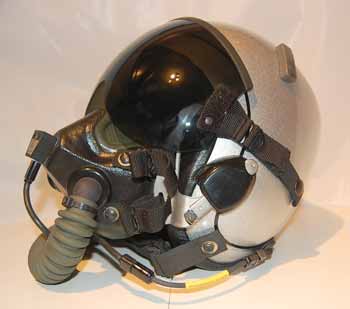
|
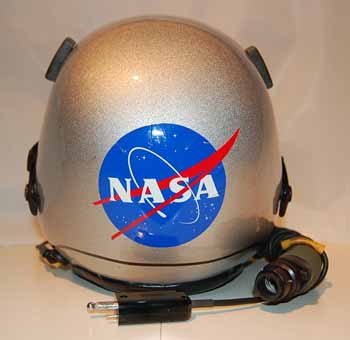
|
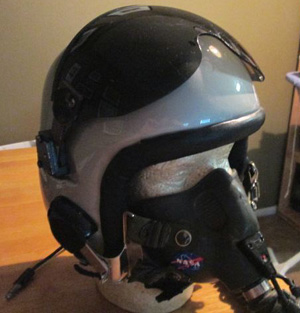
|
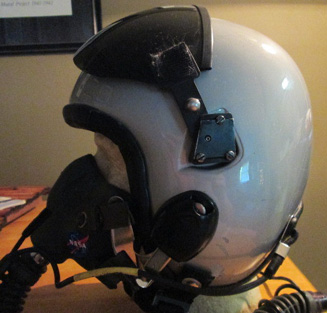
|
4AM Super TopTex flight helmet belong to NASA test pilot Tony Levier modified with HGU-53/P early style mechanism adapted on a HUG-55/P standard visor and MBU-12/P Oxygen mask.
|
| Gentex 4AM SUPER TOPTEX flight helmet with bungee visor used by test pilot Paul Metz (Philippe Tondeur collection) |
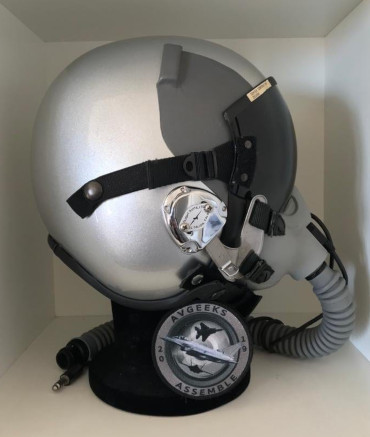
|
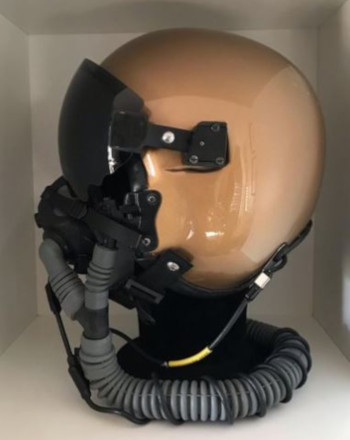
|
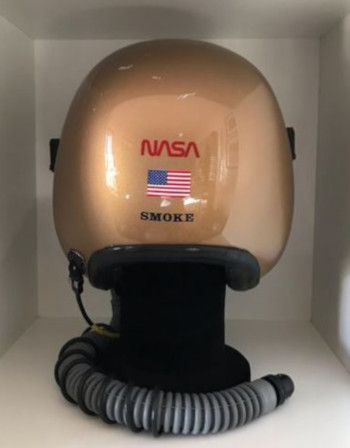
|
4AM Super TopTex flight helmet customized with HGU-53/P Style visor and Air Combat System mask receivers, belong to NASA test pilot James W. "Smoke" Smolka, a research pilot at NASA's Dryden Flight Research Center, Edwards, California (Philippe Tondeur collection)
|
HGU-48/P and HGU-55/P
|
|
NASA HGU-48/P flight helmet with MBU-12/P oxygen mask.
|

|
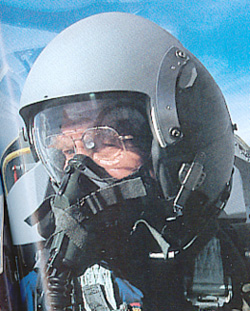
|
John Glenn in a T-38A tallon wearing an HGU-55/P with double visor kit and MBU-5/P. This pictures was taken during John Glenn training before his mission on Space Shuttle in 1998. (NASA) |
Unusual assembly of a NASA HGU-55/P flight helmet retrofitted with an HGU-68/P style visor. (NASA)
|
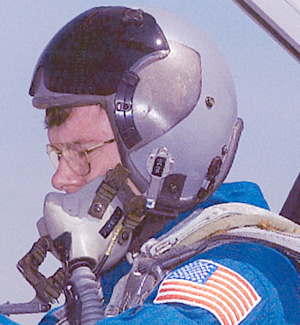
|
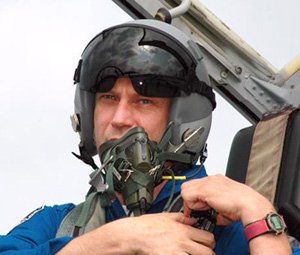
|
ESA Astronaut Thomas Reiter with HGU-55/P and MBU-5/P oxygen mask. (NASA)
|
NASA Astronaut wearing an HGU-55/P flight helmet with NAVY style white reflective tape. (NASA)
|
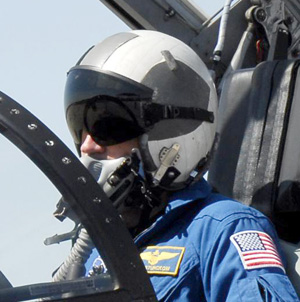
|
 |
HGU-68/P
|
|
| NASA Astronaut on T-38N wearing an HGU-68/P flight helmet with MBU-5/P oxygen mask. (NASA) |
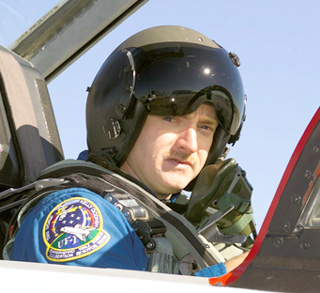
|
 |
Other NASA Custom Fit Helmets
|
|
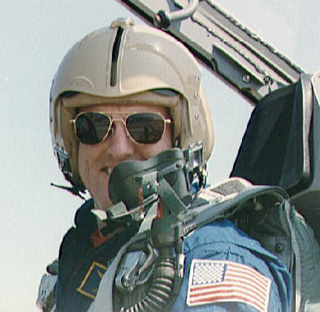
|
NASA custom fit flight helmet based on APH-6 or DH-151 shell with "swing-a-line" bayonet receivers and oxygen mask MBU-5/P (NASA) |
| NASA Astronaut wearing Custom Fit helmet with dual visor, low weight bayonet receivers and "worm" logo (NASA) |
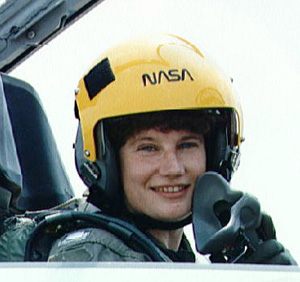
|

|
NASA Astronaut on T-38N wearing a gold painted custom fit flight helmet manufactured by Gibson & Barnes Flightsuit Ltd with integrated chin/nape strap, snap-on visor, HGU-55/P style visor stops and aluminum cast oxygen mask receivers. (NASA) |
| NASA Astronaut with a white flight helmet also in this case more likely custom fitted by Gibson & Barnes Flightsuit Ltd. The helmet has integrated chin/nape straps and dual visor system. (NASA) |
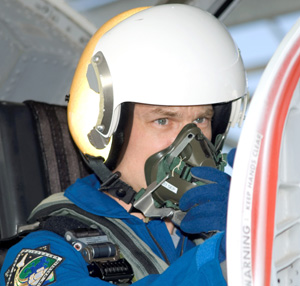
|

|
NASA Astronaut on T-38N wearing a custom fit flight helmet with integrated chin/nape strap, snap-on visor and HGU-55/P style visor stops. (NASA) |
 |
GEC-Marconi Integrated Helmet Display
In the early nineties, test were underway at NASA Dryden Flight Research Center with the experimental aircraft X-31. used on this aircraft was a GEC Marconi flight helmet. Installation of a Helmet Mounted Visual/Audio Display (HMVAD) was completed on the X-31 in October 1993. The purpose of the HMVAD was to provide out-of-the-cockpit situation awareness and simulated helmet-mounted sight to the pilot during high angle of attack combat maneuvering.
The system consisted of a GEC Viper helmet with symbology projectedon its visor by a monocular Cathode Ray Tuge. Also included was a Polhemus head tracker and an angle-of-attack audio cueing device. Both of these features were demonstated on the X-31 during post-stall close-in combat. The X-31 program logged an X-Plane record total of 524 flight with 14 pilots from NASA, US NAVY, USMC, USAF, German Air Force, DASA, Rockwell International and Deutsche Aerospace flying the aircraft. |
|
German test pilot at NASA Dryden Flight Research Center with GEC-Marconi Integrated Helmet Display. (NASA)
|
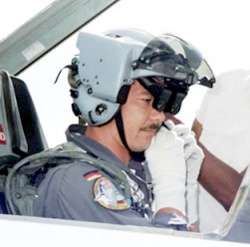
|
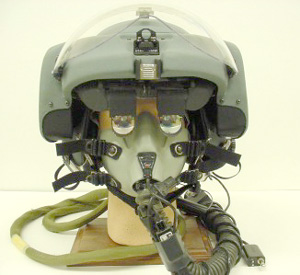
|
A GEC-Marconi Viper helmet with MBU-12/P oxygen mask with external amplifier. (Milehigh) |
 |
Gentex/Honeywell Integrated Helmet Display
In the early nineties, test were underway at NASA Dryden Flight Research Center with the experimental aircraft X-31. used on this aircraft was an experimental Gentex/Honeywell flight helmet. Installation of a Helmet Mounted Visual/Audio Display (HMVAD) was completed on the X-31 in October 1993. The purpose of the HMVAD was to provide out-of-the-cockpit situation awareness and simulated helmet-mounted sight to the pilot during high angle of attack combat maneuvering.
The system consisted of a Honeywell helmet with symbology projectedon its visor by a monocular Cathode Ray Tuge. Also included was a Polhemus head tracker and an angle-of-attack audio cueing device. Both of these features were demonstated on the X-31 during post-stall close-in combat. The X-31 program logged an X-Plane record total of 524 flight with 14 pilots from NASA, US NAVY, USMC, USAF, German Air Force, DASA, Rockwell International and Deutsche Aerospace flying the aircraft. |
|
Experimental Gentex/Honeywell Integrated Helmet Display. (Philippe Tondeur collection)
|
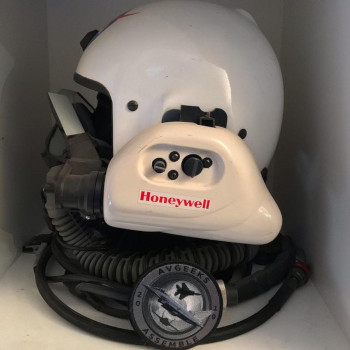
|
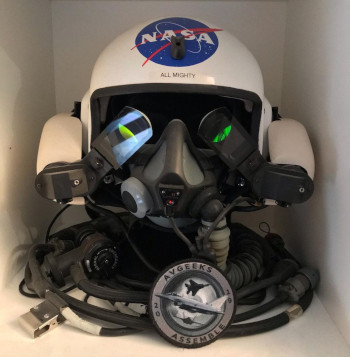
|
The Gentex/Honeywell helmet with MBU-20/P oxygen mask tested on X-31. (Philippe Tondeur collection) |
Experimental Gentex/Honeywell Integrated Helmet Display with all the relevant avionic connections. (Philippe Tondeur collection)
|
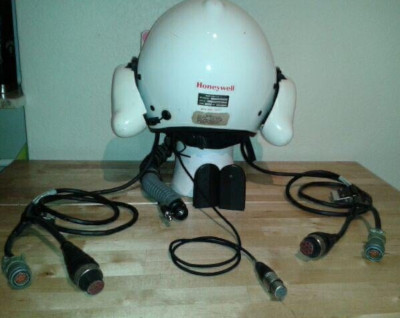
|
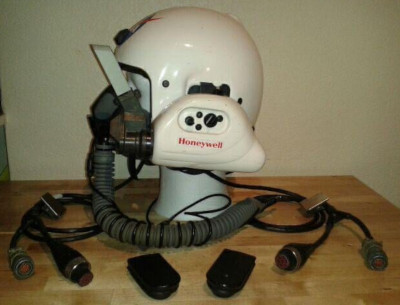
|
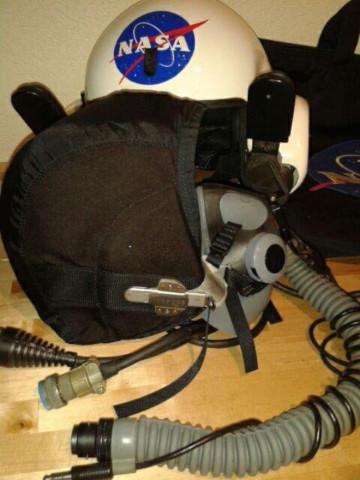
|
The Experimental Gentex/Honeywell helmet is equipment with internal liner incorporating the oxygen mask receivers. (Philippe Tondeur collection) |
Experimental Gentex/Honeywell Integrated Helmet Display and relevant identification and notice labels. (Philippe Tondeur collection)
|
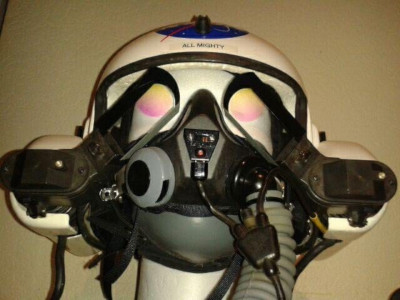
|
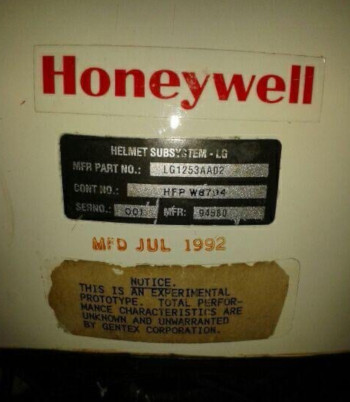
|
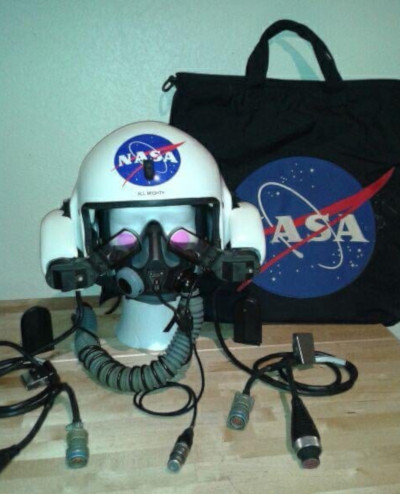
|
The Experimental Gentex/Honeywell helmet and the relevant NASA transportation bag. (Philippe Tondeur collection) |
 |
IMH (Integrated Mission Helmet) "two-part"
Engineers from NAVAIR's Crew System Research and Engineering Competency Program have developed a new helmet concept that they expect will enhance the stability and reliability of helmet mounted devices, ultimately improving the accuracy of information available to the aircrew.
This modular two-part helmet prototype was fight tested in NASA F/A 18 Hornet at NASA's Dryden Flight Research Center in Edwards. The two-part helmet concept was originated by Gentex Corp and includes advanced materials, suspension techniques and precision fitting. The inner helmet assembly or Life Support Module (LSM) is "eye-reference" which means it is individually fit to each pilot to ensure that his or her eye is always in the proper location for the outer modules. The outer helmet or Outer Mission Module (OMM) is a shell that can be talor-made to fit various mission and range from a simple helmet for impact protection to a high resolution helmet mounted display. The ability to split the protection between the inner and outer modules allows the helmet to cross platforms between rotary and fixed wing aircraft.
This experimental IMH "two part helmet" program leads to the design and the development of the new Gentex Modular Aircrew Common Helmet (MACH). |
|
A test pilot at NASA's Dryden Flight Research Center in Edwards prepares for a flight test in a F/A-18 Hornet with the new modular "two-part" helmet concept. (NASA)
|
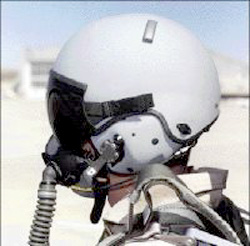
|
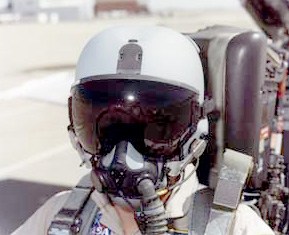
|
Test pilot wearing a modular "two-part" experimental helmet with MBU-20/P oxygen mask. (NASA) |
NASA Research pilot in Edwards prepares for a flight test in a F/A-18 Hornet with the new modular "two-part" helmet concept. (NASA)
|

|
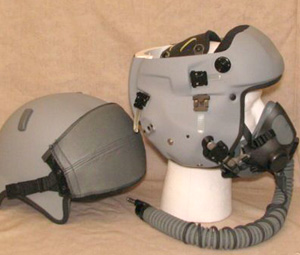
|
IMH experimental helmet with the two parts (LSM and OMM) separate |
IMH experimental helmet. The Outer Mission Module on this helmet is the Fighter version with a fixed flush mounted NVG bracket.
|
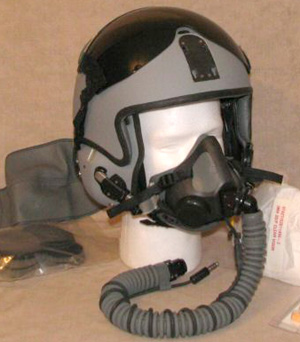
|
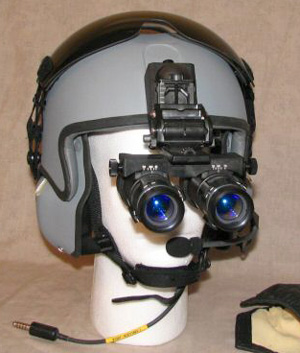
|
IMH experimental helmet with external boom microphone and Night Vision Imaging System |
Internal suspension system of the IMH experimental helmet.
|
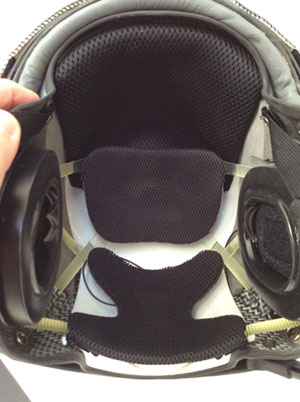
|
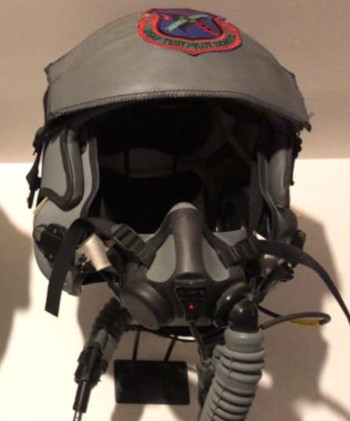
|
IMH experimental helmet tested by USAF in 2020 as possible replacement for the HGU-55/P |
 |
LifeBEAM Monitoring Helmet
The Pilots & Astronauts monitoring helmet was developed with the cooperation of the Israeli Air Force (IAF) as the first product in the world to monitor pilots during flight.
LifeBEAMís optical technology is integrated into Fighter Pilot helmets and measures blood flow (perfusion), pulse rate, and SpO2.
LifeBEAMís state of the art algorithms are integrating several sources of information: pilotís physiology, aircraftís physics (G-forces, velocity, altitude & positioning) and pilotís head & body postures. Based on the above data and by using machine learning & neural network methods, the system automatically detects life-threatening situations, such as Hypoxia, A-LOC and G-LOC in real-time.
When the system identifies a development of a dangerous situation, it provides an immediate alert to both air & ground crew. The system also enables integration with aircraftís systems such as automatic pilot & flight debriefing tools.
The system was evaluated during F-16 flights, centrifuge trainings, NASAís training facilities and in hypobaric chambers.
|
|
LifeBEAMís optical technology is integrated into Fighter Pilot helmets and measures blood flow (perfusion), pulse rate, and SpO2.
LifeBEAMís state of the art algorithms are integrating several sources of information: pilotís physiology, aircraftís physics (G-forces, velocity, altitude & positioning) and pilotís head & body postures. (LifeBEAM)
|

|
 |
|









































































